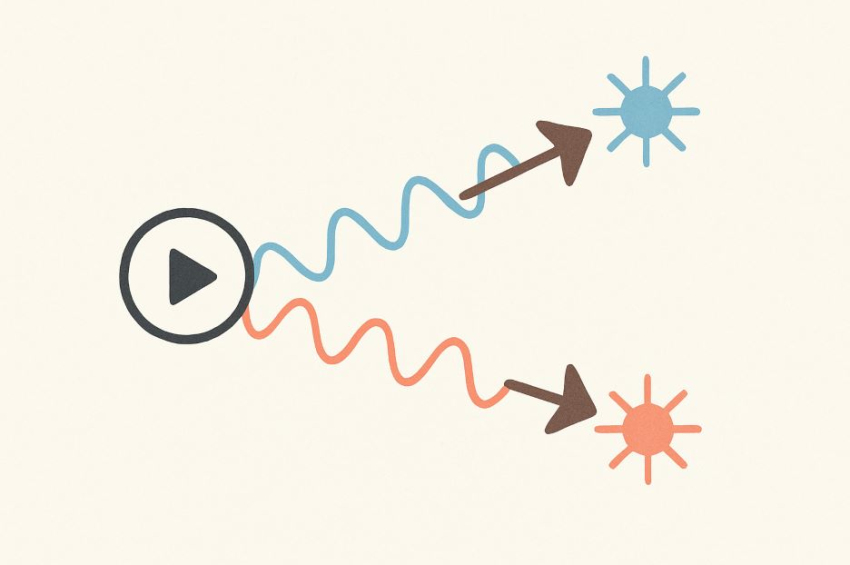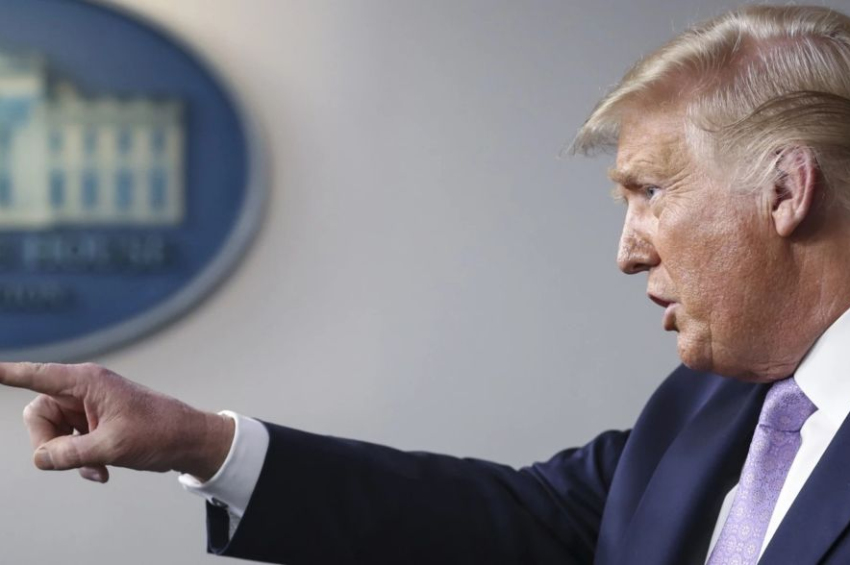Scientists put a quantum system in a “both-forward-and-backward time” state
In a bold experiment, physicists succeeded in placing a quantum system into a state that evolves both forward and backward in time at once — a phenomenon with no analogue in our everyday world. The research, conducted by teams including the University of Vienna and the Institute for Quantum Optics and Quantum Information (IQOQI), appears in the journal Physical Review Research.
This is the same team which in 2023 managed to “rewind” a quantum system in its tiniest scale. In the previous experiments, they achieved an average “rewinding fidelity” (i.e. accuracy of returning to the original state) exceeding 95%, highlighting that time, at the quantum scale, is less rigid than we imagine.
Why “time direction” matters
In daily life, we’re used to time having a clear direction: eggs break, but don’t un-break; smoke diffuses outward, but doesn’t un-diffuse. That’s tied to thermodynamics and entropy, the idea that things tend to get more disordered over time.
More to read:
Why do we feel like time is speeding up after 40?
In quantum mechanics, however, the rules are more flexible. Some quantum processes (in isolation) are perfectly reversible: you can evolve a state forward under certain dynamics, then undo that evolution exactly. But doing that in practice — especially when the dynamics are unknown — is extremely challenging.
Even more exotic is the notion that rather than choosing “forward” or “backward,” one might put a quantum system in a superposition of both time directions. That’s what the experimenters set out to realize.
What is quantum time flip
In their experiment, the Austrian researchers defined an operation called the “quantum time flip.” This is an operation that, when applied to a quantum process, leaves it in a coherent superposition of going “forward in time” and “backward in time.”
More to read:
New AI model predicts events in your life, even time of death
They implement this quantum time flip using photons (particles of light) and optical circuits, arranging things so that a photon’s evolution can be coherently “flipped.”
To test whether they succeeded, they embed this setup in a kind of “game” (a discrimination task).
Essentially, they choose between two different sets of quantum operations (operators), and the system must help tell which set is in use.
The key is: using the time-flip superposition gives an advantage over any strategy that commits to a single time direction (forward or backward) or even some schemes with indefinite causal order (where the sequence of operations is uncertain).
Their results show clear signatures that the system behaves as though it's evolving in both directions at once, and that this “indefinite time direction” can outperform more rigid alternatives in the discrimination task.
More to read:
Microsoft claims its new processor is one step closer to quantum computing
Why it’s so exciting?
New kind of quantum control. This experiment goes beyond previous “rewind the quantum evolution” demonstrations. Instead of just reversing something known, it creates a superposition of forward and backward evolution — a fundamentally new operational regime.
Conceptual impact. It stretches our intuition of causality and time. If a system can meaningfully “be in both time directions,” what does that say about how we understand temporal order at the quantum level?
Practical hints. The discrimination task shows this isn’t just a curiosity — the effect can yield a performance boost in a specific quantum information task. That hints at potential utility in quantum computing or communication settings.
Cautions & challenges ahead
Of course, this is not time travel in the sci-fi sense. The experiment deals with small, well-controlled quantum systems (photons, in a lab). Scaling to large or noisy systems is a big challenge.
The advantage is context-dependent; the “game” is specially tailored. Whether superposition of time direction helps in broad, practical tasks is still to be proven.
The scheme depends on very, very precise control, very low noise, and super delicate quantum interference — deviations or decoherence could spoil the effect.
What’s next?
The natural next steps include trying to scale up to more qubits or more complex systems, to see if the effect survives in heavier, noisier settings.
More to read:
Chinese scientists hacked military-grade encryption with quantum computer
Researchers will likely try embedding such time-direction superposition tools into quantum algorithms or protocols (error correction, sensing, communication) to see if there are real-world gains.
Also, the theoretical side will explore what sorts of operations and transformations allow indefinite time direction, and how that meshes with fundamental quantum mechanics and causality.
In sum, this experiment opens a new window into the quantum nature of time. Even though we perceive time as a one-way street, on the edge of quantum mechanics, that street may branch in ways we’re only beginning to explore.







